CLIMATE IS THE CRISIS
Laura Paddison, CNN
Tue, May 14, 2024
A deadly heatave in Gaza in April, which saw punishing temperatures worsen an already dire humanitarian crisis, was made hotter and more likely by the human-caused climate crisis, according to an analysis published Tuesday.
Gaza was not alone. Several heat waves spanning a vast area of the Asian continent last month during the world’s hottest April on record were made more intense and likely by the climate crisis, the analysis from the World Weather Attribution initiative (WWA) found.
The WWA report divided the heat waves into three areas: West Asia, the Philippines and a region spanning South and Southeast Asia.
In West Asia, the analysis focused on the Palestinian territories, Syria, Lebanon, Israel and Jordan, where temperatures spiked above 40 degrees Celsius (104 Fahrenheit) last month. It found climate change made the heat in this region around five times more likely and 1.7 degrees Celsius hotter than it would have been before humans started burning large amounts of fossil fuels.
Soaring temperatures had a particularly stark impact on the 1.7 million displaced people in Gaza, already struggling with insufficient water access and inadequate healthcare. There was little respite from the relentless heat for those crammed into makeshift tents and shelters, often covered with plastic sheets. At least three people, including two children, reportedly died from the heat, the analysis notes.
In the Philippines, the extreme heat last month — which forced hundreds of schools to close as temperatures reached more than 42 degrees Celsius — had such a strong link to human-caused global warming the report concluded it would have been impossible without it.
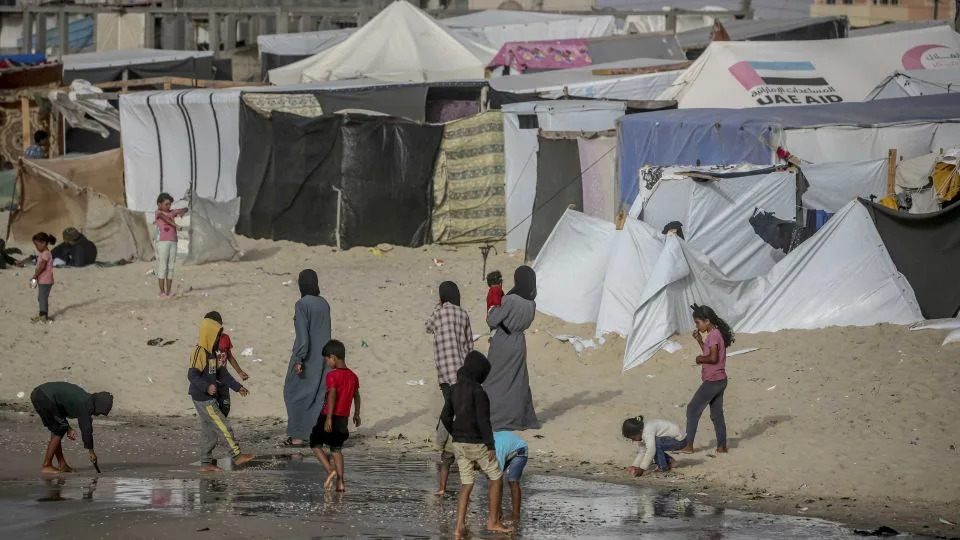
Palestinians jump into the water to cool off during hot weather in Rafah, Gaza on April 19, 2024. - Jehad Alshrafi/Anadolu/Getty Images
To calculate the influence of climate change on the extreme heat, WWA researchers used weather data and computer models to compare the world’s current climate — which is around 1.2 degrees Celsius warmer than before humans started burning large amounts of fossil fuels — with the climate of the past.
“From Gaza to Delhi to Manila, people suffered and died when April temperatures soared in Asia,” Friederike Otto, senior lecturer in climate science at the Grantham Institute for Climate Change and the Environment and a report author, said in a statement. “Heat waves have always happened. But the additional heat, driven by emissions from oil, gas and coal, is resulting in death for many people.”
The scientists also examined the role of El Niño, a natural climate pattern that influences global weather.
While they found it had no influence in West Asia’s April heat, it did affect the intensity of heat in the Philippines, pushing up temperatures by 0.2 degrees Celsius. However, the impact of climate change there was greater, increasing temperatures by about 1.2 degrees.
In today’s warmer world, the kind of extreme heat waves experienced in Gaza and West Asia, as well as the Philippines, are not rare and can be expected around once every 10 years, the report found. But it warns worse could be in store.
If the planet’s average temperature rises to 2 degrees Celsius above pre-industrial levels, which is predicted to happen in the 2040s or 2050s if the world does not decarbonize fast enough, similar extreme heat waves could be expected once every five years in West Asia and every two to three years in the Philippines.
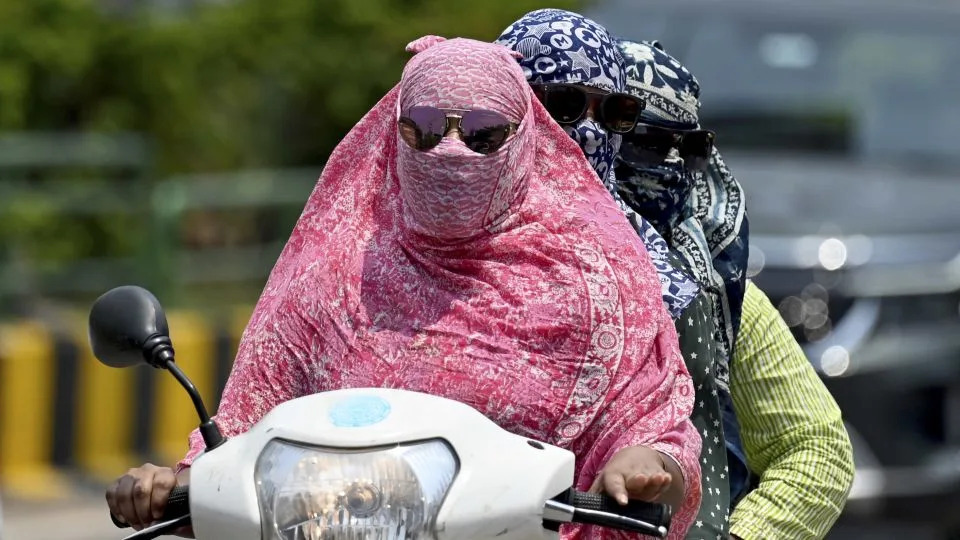
Women cover their faces with a cloth on a hot day, in Raipur, India, on April 15, 2024. - Idrees Mohammed/AFP/Getty Images
Heat wave made 45 times more likely
The WWA analysis also looked at parts of South and Southeast Asia, many of which also experienced unprecedented heat last month.
Myanmar, Laos and Vietnam all broke records for their hottest April day, while temperatures spiked to 46 degrees Celsius (115 Fahrenheit) in India. Bangladesh and Thailand also experienced scorching April temperatures and were included in the study.
Climate change also played a pronounced role in this region, according to the analysis, making the heat 45 times more likely and 0.85 degrees Celsius hotter.
The scientists took a simpler approach than usual for this part of Asia, looking only at weather data and not computer models, because the region overlapped with two previous analyses of extreme heat events in 2022 and 2023, which also found climate change played a strong role.
The numbers in the report are important, Otto said, “because they show us that everywhere climate change is an absolute game changer when it comes to extreme heat.” But numbers alone don’t necessarily show how bad the impacts are — these depend on people’s vulnerability and exposure.
Days of temperatures above 40 degrees Celsius (104 Fahrenheit) were “particularly difficult for people working outdoors, people living in informal housing (and) people living in refugee camps,” Otto said.
Asia is also home to some of the planet’s fastest growing cities, said Carolina Pereira Marghidan, climate risk consultant at the Red Cross Red Crescent Climate Centre, on a call with reporters. This has led to rapid, unplanned development. “Many cities have seen extreme losses of green space,” Pereira said, increasing the impacts of extreme heat on residents.
The world must take “massive, unprecedented steps to reduce emissions,” said Mariam Zachariah, a researcher at the Grantham Institute, in a statement. If not, she added, “extreme heat will lead to even greater suffering in Asia.”
Asia’s Killer April Heat Wave Was Made Much Worse by Climate Change
Lou Del Bello
Tue, May 14, 2024



(Bloomberg) -- The April heat wave that swept through Asia, bringing temperatures as high as 46C (115F) in some places, was much more severe and likely to occur than it would have been in a world without climate change, scientists have concluded.
Extreme heat affected hundreds of millions across the region last month, adding to the plight of 1.7 million people displaced by the war in Gaza as well as those without access to cooling. Hundreds of people died from heat-related causes, although more fatalities were likely to have gone unreported, according to the researchers.
The World Weather Attribution (WWA) group used computer models and ground observations to trace the footprint of heat-trapping gases in the affected area.
“What we wanted to know is whether such temperatures were possible in the past, and whether they will be like this going into the future.” said Mariam Zachariah, a climate change researcher at the Grantham Institute of Imperial College London and lead author of the study.
The scientists found that in areas such as Palestine and Israel, climate change made the heat wave five times more likely than it would have been in pre-industrial times, and 1.7C hotter.
In the Philippines, where temperatures were 1.2C higher, the researchers estimated that this year’s heat wave would have been impossible without decades of burning fossil fuels.
In South Asia, which was the focus of two such studies in 2022 and 2023, abnormal heat was found to be 45 times more likely to occur, and to be 0.85C higher due to climate change.
The WWA researchers also looked at whether El Niño, the naturally occurring warm current in the Pacific Ocean, may have played a part in the event. They concluded that while it raised temperatures in the Philippines by about 0.2C, it did not influence the West Asian heatwave.
The study drives home the prospect of “wide-ranging systemic impacts on the economy,” said Ashish Fernandes, chief executive officer of the consultancy Climate Risk Horizons. “If you look at the major economic indicators that are problematic right now in India, you see food inflation, low level productivity, unemployment,” all of which will worsen with each new heat wave.
A separate study in 2022 found that heat may contribute to 650 billion hours a year of lost labor globally, having cost an estimated $2.1 trillion equivalent in 2017 alone.
“I would describe this is as a chronic inflammation of the body,” Fernandes said. “You are not collapsing and dying, but it makes your life harder in every way.”
Heat action plans are in place in countries like India, the WWA scientists note, albeit not at a sufficient scale to protect the most vulnerable from temperature stress.
“The scale of the problem and people impacted in a country like India is enormous,” said Jaya Dhindaw, a sustainability expert at the World Resources Institute, citing the many people who lack resources to protect themselves from extreme heat. “It is a matter of survival.”
The reality on the ground is also complex, said Aditya Valiathan Pillai, a fellow with the think tank Sustainable Futures Collective who in 2023 carried out an extensive analysis of India’s heat action plans at a state level.
“Putting preparedness front and center as a major strategy across the many thousands of local governments in this country is a very big challenge,” he said. Funding is often scarce, but public awareness about heat exposure risks is what’s still lacking in India, as people are only now starting to understand that high temperatures can kill as well as decrease productivity.
None of this is easy, he said, but getting myriad local administrations to work together “may well result in a resiliency framework for the country which would be an example for other heat-prone nations in the developing world.”
--With assistance from Coco Liu.
Sweltering heat across Asia was 45 times more likely because of climate change, study
finds
SIBI ARASU
Tue, May 14, 2024

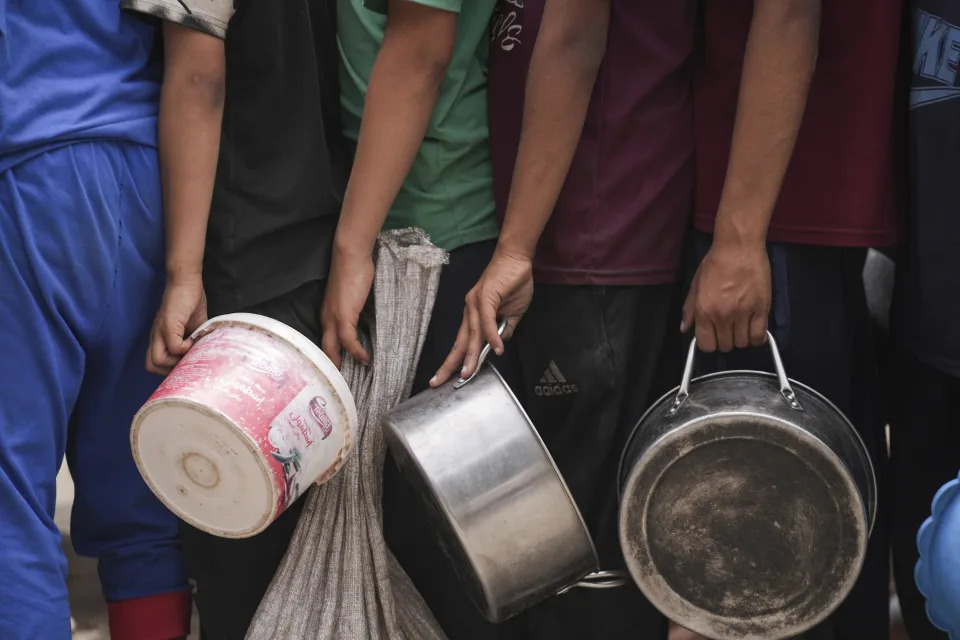
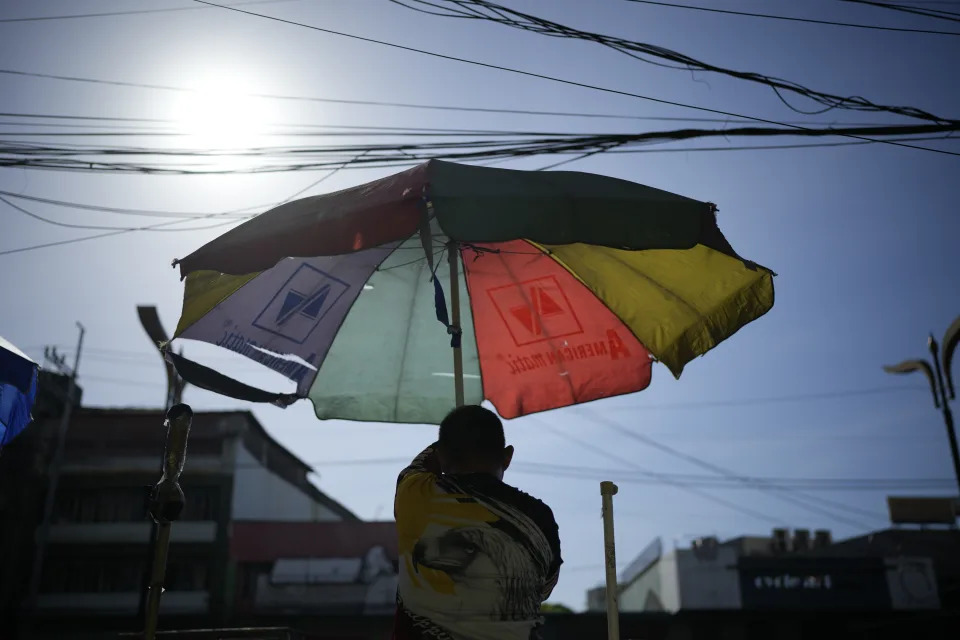

A man drinks water as he takes a break from cleaning an underground sewage on a hot summer day in Mumbai, India, May 2, 2024. Sizzling heat across Asia and the Middle East in late April that echoed last year’s destructive swelter was made 45 times more likely in some parts of the continent because of human-caused climate change, a study found.
(AP Photo/Rafiq Maqbool, File)
BENGALURU, India (AP) — Sizzling heat across Asia and the Middle East in late April that echoed last year's destructive swelter was made 45 times more likely in some parts of the continent because of human-caused climate change, a study Tuesday found.
Scorching temperatures were felt across large swaths of Asia, from Gaza in the west — where over 2 million people face clean water shortages, lack of health care and other essentials amid the Israeli bombardment — to the Philippines in the southeast, with many parts of the continent experiencing temperatures well above 40 degrees Celsius (104 degrees Fahrenheit) several days in a row.
The study was released by the World Weather Attribution group of scientists, who use established climate models to quickly determine whether human-caused climate change played a part in extreme weather events around the world.
In the Philippines, scientists found the heat was so extreme it would have been impossible without human-caused climate change. In parts of the Middle East, climate change increased the probability of the event by about a factor of five.
“People suffered and died when April temperatures soared in Asia,” said Friederike Otto, study author and climate scientist at Imperial College in London. “If humans continue to burn fossil fuels, the climate will continue to warm, and vulnerable people will continue to die.”
At least 28 heat-related deaths were reported in Bangladesh, as well as five in India and three in Gaza in April. Surges in heat deaths have also been reported in Thailand and the Philippines this year according to the study.
The heat also had a large impact on agriculture, causing crop damage and reduced yields, as well as on education, with school vacations having to be extended and schools closed in several countries, affecting thousands of students.
Myanmar, Laos and Vietnam broke records for their hottest April day, and the Philippines experienced its hottest night ever with a low of 29.8 degrees Celsius (85.6 degrees Fahrenheit). In India, temperatures reached as high as 46 degrees Celsius (115 degrees Fahrenheit). The month was the hottest April on record globally and the eleventh consecutive month in a row that broke the hottest month record.
Climate experts say extreme heat in South Asia during the pre-monsoon season is becoming more frequent and the study found that extreme temperatures are now about 0.85 degrees Celsius (1.5 Fahrenheit) hotter in the region because of climate change.
Internally displaced people, migrants and those in refugee camps were especially vulnerable to the searing temperatures, the study found.
“These findings in scientific terms are alarming," said Aditya Valiathan Pillai, a heat plans expert at New Delhi-based think tank Sustainable Futures Collaborative. "But for people on the ground living in precarious conditions, it could be absolutely deadly.” Pillai was not part of the study.
Pillai said more awareness about heat risks, public and private investments to deal with increasing heat and more research on its impacts are all necessary to deal with future heat waves.
“I think heat is now among the foremost risks in terms of personal health for millions across the world as well as nations’ economic development," he said.
___
Associated Press writer Seth Borenstein in Washington, D.C. contributed to this report.
___
Follow Sibi Arasu on Twitter at @sibi123
____
The Associated Press’ climate and environmental coverage receives financial support from multiple private foundations. AP is solely responsible for all content. Find AP’s standards for working with philanthropies, a list of supporters and funded coverage areas at AP.org.
Asia's deadly heat wave was made 45 times more likely for this reason
Li Cohen
Updated Wed, May 15, 2024
Hundreds of people died across Asia in recent weeks as the region sweltered under blistering temperatures. And a new study determined a leading factor in how it all happened.
Last month, many areas in India saw temperatures well above triple digits. The country's meteorological service says that heat waves are not uncommon between March and June, with May being the "peak month" for the extreme weather event. In Bhagdora, India, last month, temperatures hit nearly 115 degrees Fahrenheit as the India Meteorological Department issued a red alert warning, meaning that severe heat was expected to persist for more than two days and there was a very high likelihood for heat-related illnesses.
Elsewhere in the country, it was so hot that schools were canceled, an issue that people also faced in the Philippines. People in Thailand were also asked by officials to stay indoors when possible to avoid the heat, as dozens of people had already died from heat-related illnesses. According to the Associated Press, the April heat killed at least 28 people in Bangladesh, five in India and three in Gaza.
And according to the organization World Weather Attribution, it all comes down to two words – climate change.

An elderly person is bathing beside a road on a hot summer day on the outskirts of Kolkata, India, on April 28, 2024. / Credit: Sudipta Das/NurPhoto via Getty Images
"The heat wave exacerbated already precarious conditions faced by internally displaced people, migrants and those in refugee camps and conflict zones across West Asia," a new study from the organization said. "... The extreme heat has forced thousands of schools to close down in South and Southeast Asia."
Researchers said that while the kind of heat experienced during this time "is not very rare," it's only being amplified by climate change, which is fueled by global warming largely caused by the burning of fossil fuels.
West Asia is anticipated to get an extreme heat event once a decade, and in the Philippines, that likelihood is even less, about once every 20 years when El Niño isn't at play. In South Asia at large, extreme heat is not common.
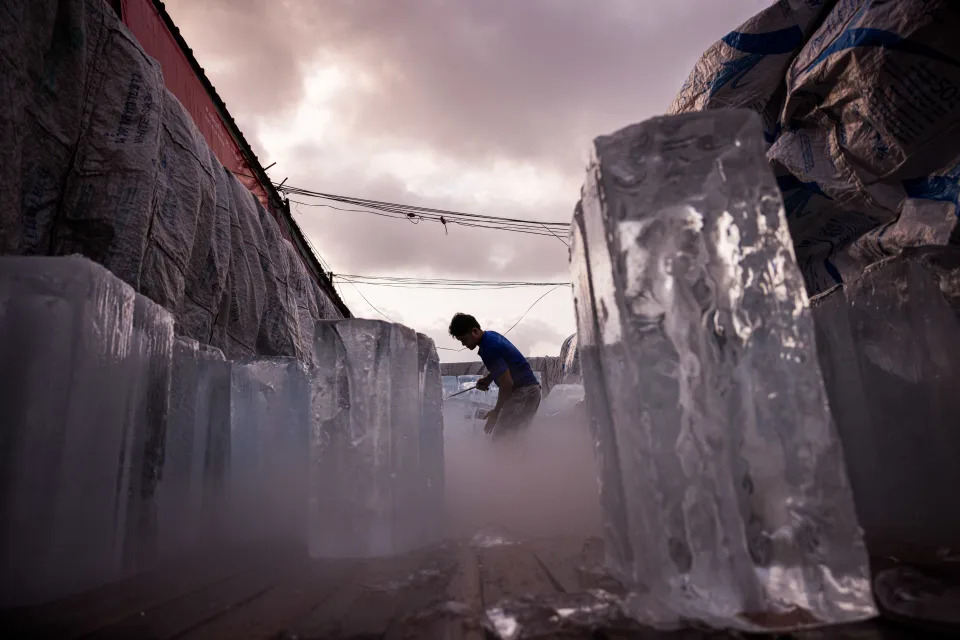
A man unloads blocks of ice from a truck during high temperatures in Bangkok, Thailand, on Sunday, April 28, 2024. / Credit: Andre Malerba/Bloomberg via Getty Images
"An extremely warm April such as this one is a somewhat rarer event, with a 3% probability of happening in a given year – or once every 30 years," researchers said, adding that observations and data models show that human-caused climate change creates a "strong increase in likelihood and intensity."
"In the Philippines, the change in likelihood is so large that the event would have been impossible without human-caused climate change," they said. "In West Asia, climate change increased the probability of the event by about a factor of 5."
The average April temperatures in South Asia, which the group has studied twice in the last two years from other extreme events, "are now about 45 times more likely and 0.85 degrees Celsius hotter," they found.
"Sounds like a broken record – yes! But heat is still underreported, underrecorded and extremely deadly," Friederike Otto, who is part of the World Weather Attribution study, said on social media. "The world is not prepared for today's climate change, let alone the future."
Extreme heat is "becoming the silent killer," Ko Barrett, deputy secretary-general of the World Meteorological Organization, said in April.
"Heat-related mortality is widely under-reported and so the true scale of premature deaths and economic costs – in terms of reduced labor productivity, agricultural losses, and stress on the power grid - is not accurately reflected in the statistics," she said.
The report from the World Weather Attribution came a day ahead of another report from the WMO that found this April was the warmest one on record and the 11th consecutive month of record temperature worldwide.
The average surface air temperature last month was 15.03 degrees Celsius, about 59 degrees Fahrenheit, more than 1.5 degrees Celsius warmer than pre-industrial times. Scientists have warned that if the planet experiences persistent temperatures at that 1.5 threshold, it could cause significant impacts on weather events leading to global issues surrounding food and water availability, migration and infrastructure.
"The record temperatures were accompanied by high-impact weather events — including intense heat in many parts of Asia," the WMO said. "The heat also had a large impact on agriculture, causing crop damage and reduced yields, as well as on education, with holidays having to be extended and schools closed in several countries, affecting millions of students."
It will take years of this continued breaching of 1.5 degrees above preindustrial levels for the planet to officially mean humans have failed to achieve the goals of the Paris Agreement and launched the world into a more disastrous climate era. However, 11 months of record heat – and potentially beyond – indicates "early signs of getting perilously close to exceeding the long-term limit," the United Nations says.
"Every fraction of a degree of warming matters. With every additional increment of global warming, changes in extremes and risks become larger," the international agency says. "... We need to bend the global emissions curve — and the production and consumption of coal, oil, and gas - downwards, starting now. A wide range of solutions exist."
Arshad R. Zargar contributed to this report.
No comments:
Post a Comment